

Ben Zachariah
2026 Toyota HiLux review: Quick drive
4 Days Ago
The safety body is ramping up its tests for 2023 protocols, with an emphasis on driver assist features and vulnerable road users.

Senior Contributor


Senior Contributor
As safety features improve, so too must the procedures that test their effectiveness.
Australia’s crash tester, ANCAP, will replace its current 2020-22 test protocols with a tougher new regime from January 2023. It will still smash cars into deformable barriers, but there’s a growing array of extra hoops for brands to leap through.
The new protocols, shared with Euro NCAP, will introduce both new and updated tests, with a focus on active safety features designed to mitigate the accident in the first place.
As with the current system, the overall vehicle rating will take into account four main areas: Adult occupant protection, child occupant protection, vulnerable road-user protection, and safety assist features.
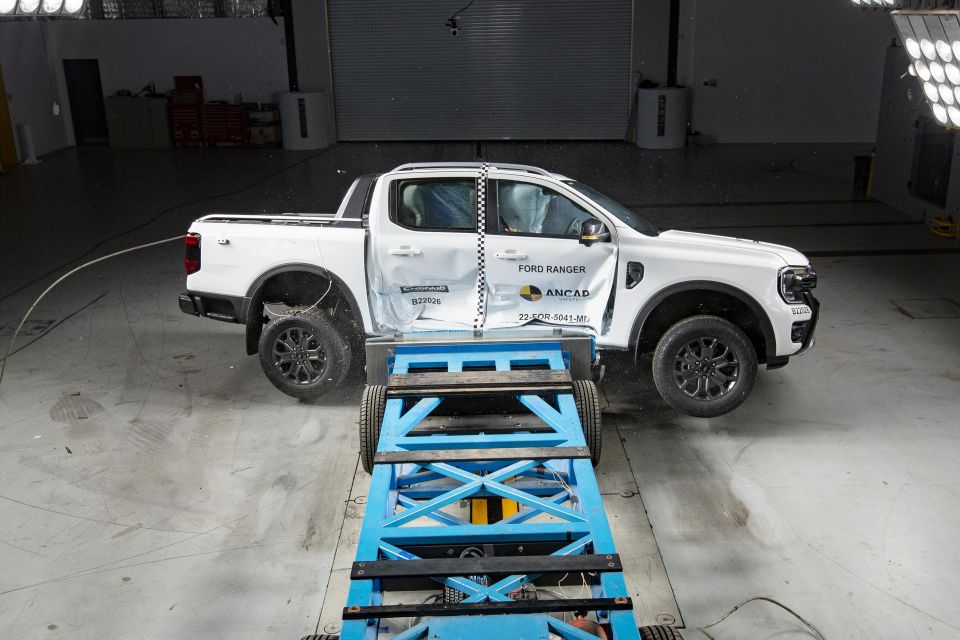
There are thresholds in each section required to earn a five-star rating.
Vehicles must score a minimum 80 per cent in adult occupant and child occupant tests, and 70 per cent in the areas looking at pedestrian/cyclist protection (up from 60 per cent in current protocols), and safety assist aids.
“Our 2023 requirements build upon our existing criteria to promote further vehicle safety improvements and address some of the ongoing challenges on our roads,” said ANCAP chief executive Carla Hoorweg.
“… Vehicles, and the safety technologies within them, are continuing to evolve, and our test criteria are too.
“Physical protection in a crash, and the ability to actively avoid a crash are both essential elements to achieve a high ANCAP safety rating, and this approach will continue from 2023.”
AEB and lane-keeping assist that ‘sees’ motorcycles
ANCAP has been testing the effectiveness of AEB systems since 2018, but only at seeing cars, pedestrians and cyclists. Now, motorcycle-detecting autonomous emergency braking (AEB) and lane assist systems will become important.
From next year test vehicles wanting the maximum score will need to be fitted with an AEB system capable of braking for a motorcycle in intersection-turning scenarios, and where a vehicle is approaching a stationary or moving motorcycle from behind.
Vehicles will also be tested for their ability to detect and prevent side-swipe-type crashes with a motorcycle through more sophisticated active lane support systems.
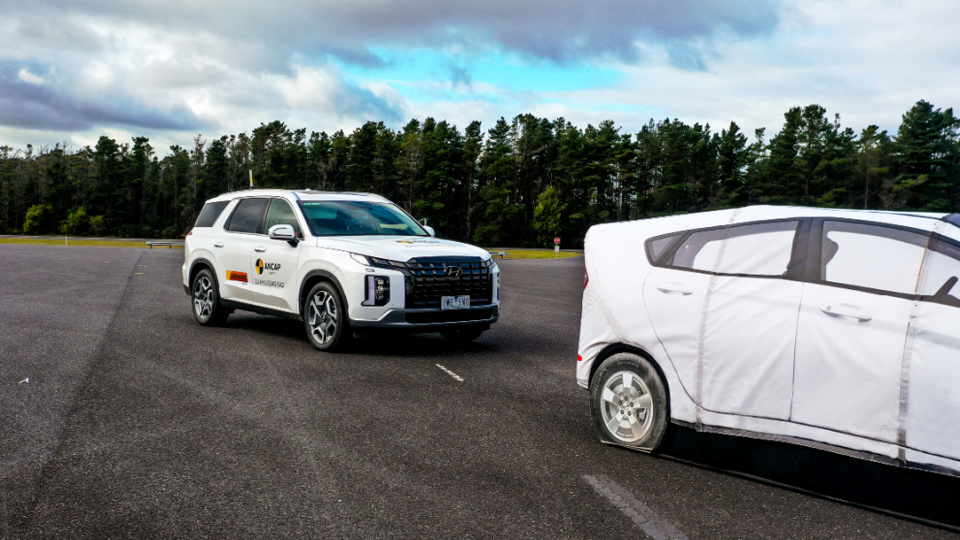
More, and better, pedestrian and cyclist testing
Pedestrians and cyclists make up around 15 per cent of all road-related fatalities.
The harder 2023 tests will use a new, better leg form impactor dummy, which more closely represents a full adult leg with upper body mass, and thereby gives more insight into the injury risks presented to pedestrians and cyclists by today’s new vehicles.
Furthermore, new test scenarios include:

AEB head-on and junction crossing
Vehicles will be assessed for their ability to prevent head-on crashes with oncoming vehicles, and with vehicles that may cross paths at an intersection.
Head-on crashes are difficult to prevent because a higher approach speed means the technology in vehicles must detect and react to an oncoming vehicle from a longer distance.
Car-to-car crossing scenarios have also been introduced to test a system’s ability to autonomously brake where two vehicles may be on course to collide at a T-intersection or cross-road. A junction AEB system requires sensors with a wide field of view.
Performance testing of ‘AEB Head-On’ and ‘AEB Junction’ systems are designed to encourage enhancements to vehicle systems to allow oncoming vehicles – approaching directly or at right-angles – to be detected, and autonomous braking applied to mitigate the damage.
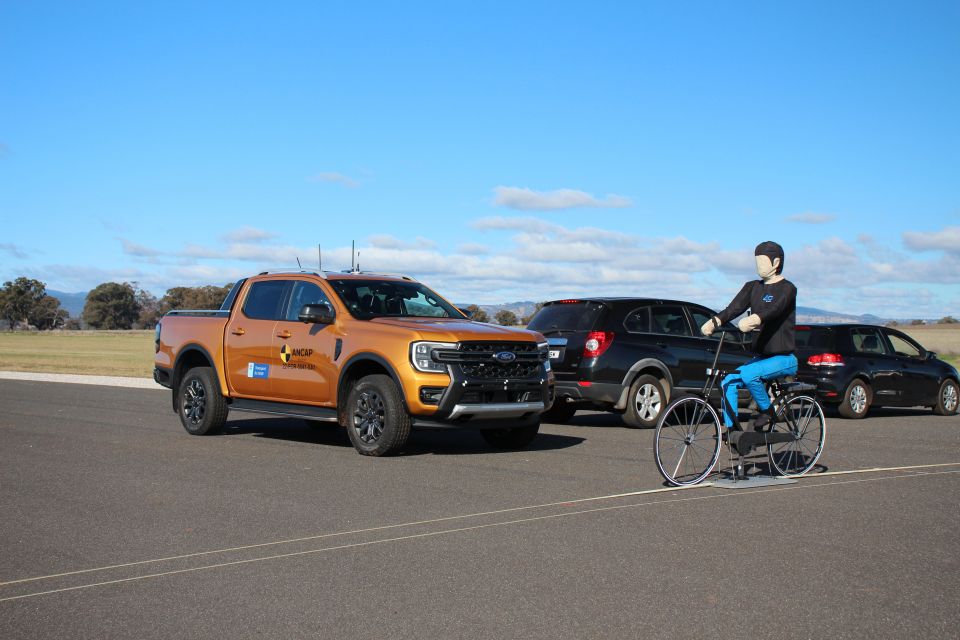
Child presence detection
Vehicles will be assessed for their ability to notify the driver or emergency services if a child has inadvertently been left in a locked car.
Child Presence Detection systems monitor the back seats and doors. If you leave a kid back there the car can emit a visual or audible warning through the infotainment system when you’re exiting, honk the horn, push a notification or alert to an app, or place an automated ‘eCall’ to emergency services.
More advanced systems may also have the ability to automatically open the windows of the vehicle or activate the vehicle’s air-conditioning system.

Vehicle submergence
This one, which we covered here, feels topical.
From 2023, carmakers will be required to demonstrate how their vehicle can help occupants escape their submerged vehicle, or how rescuers can access trapped occupants.
ANCAP will assess whether car doors are able to be opened without battery power, and whether electric windows remain functional and able to be opened for up to two minutes after submergence.
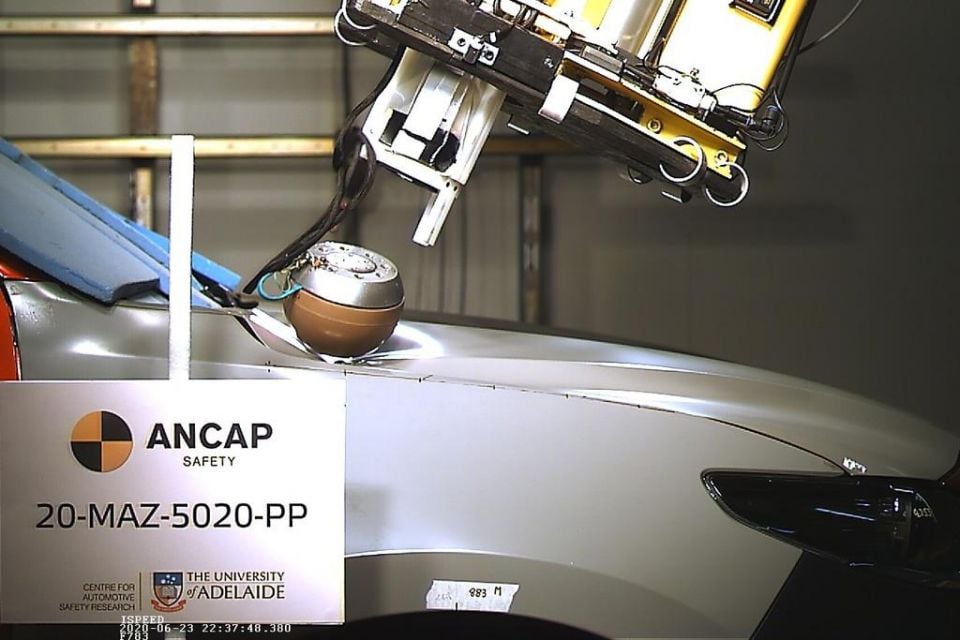
Updates to existing test areas
Several existing assessment areas will also be “enhanced”, including:


Ben Zachariah
4 Days Ago


James Wong
3 Days Ago
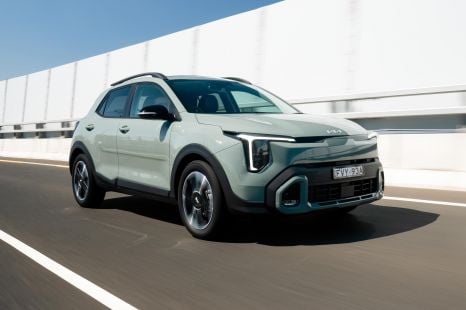

James Wong
3 Days Ago


Andrew Maclean
2 Days Ago


Matt Campbell
1 Day Ago
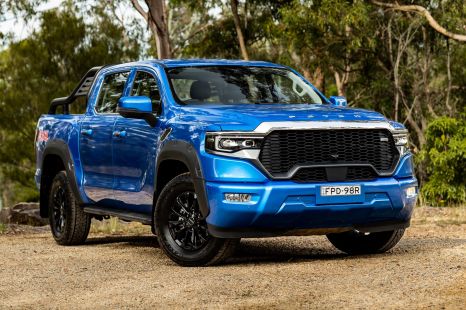

Matt Campbell
10 Hours Ago